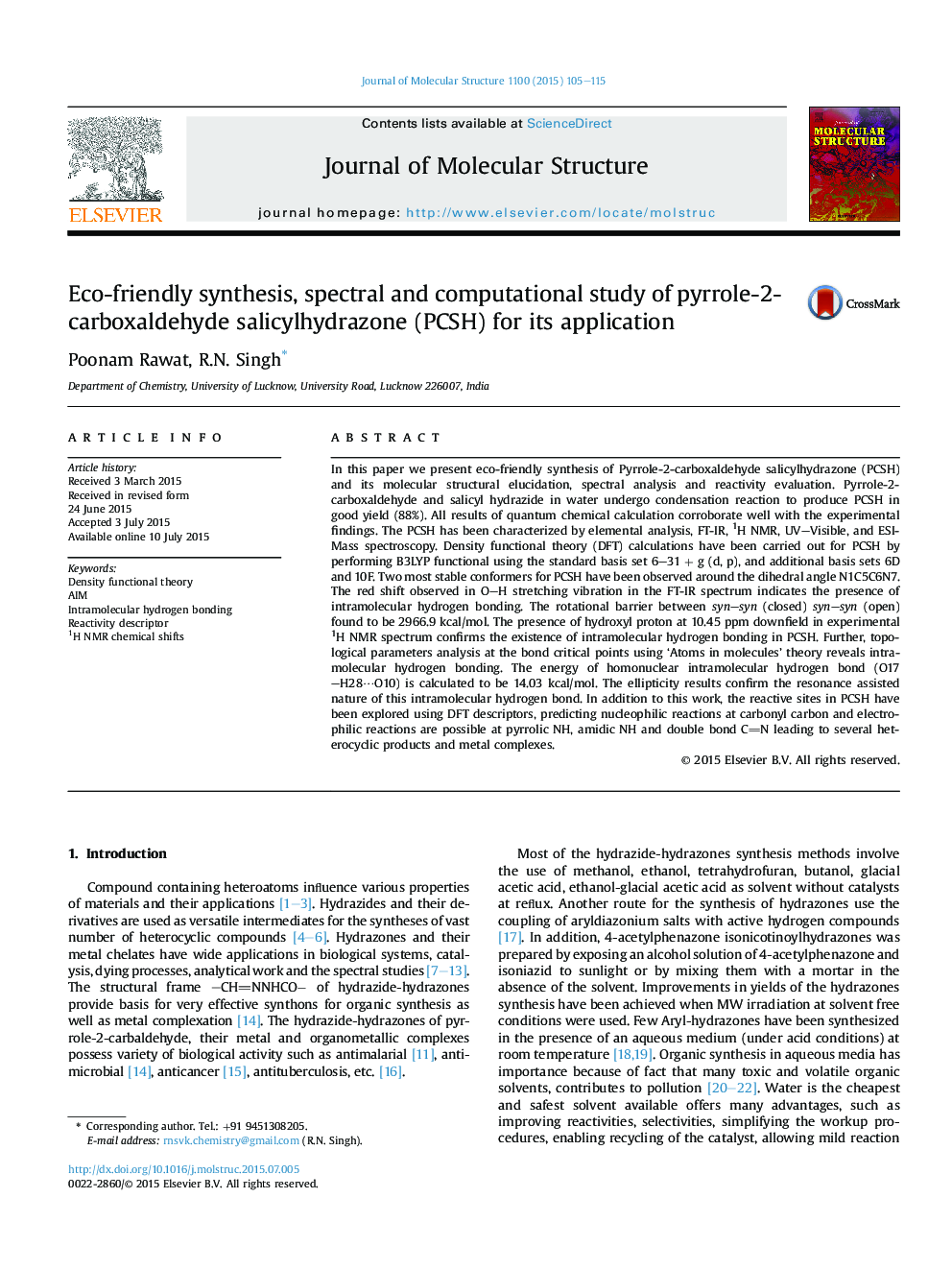| Article ID | Journal | Published Year | Pages | File Type |
|---|---|---|---|---|
| 1407998 | Journal of Molecular Structure | 2015 | 11 Pages |
•PCSH was synthesized in water with good yield (88%).•The rotational barrier between syn–syn (closed), syn-anti forms is 12.28 kcal/mol.•Conformer syn–syn (closed), anti-syn and syn–syn (open) exist in ratio 99.96: 0.04: 10−16 respectively, in the gas phase.•The reactivity parameters indicate its further utility in organic synthesis.
In this paper we present eco-friendly synthesis of Pyrrole-2-carboxaldehyde salicylhydrazone (PCSH) and its molecular structural elucidation, spectral analysis and reactivity evaluation. Pyrrole-2-carboxaldehyde and salicyl hydrazide in water undergo condensation reaction to produce PCSH in good yield (88%). All results of quantum chemical calculation corroborate well with the experimental findings. The PCSH has been characterized by elemental analysis, FT-IR, 1H NMR, UV–Visible, and ESI-Mass spectroscopy. Density functional theory (DFT) calculations have been carried out for PCSH by performing B3LYP functional using the standard basis set 6–31 + g (d, p), and additional basis sets 6D and 10F. Two most stable conformers for PCSH have been observed around the dihedral angle N1C5C6N7. The red shift observed in O–H stretching vibration in the FT-IR spectrum indicates the presence of intramolecular hydrogen bonding. The rotational barrier between syn–syn (closed) syn–syn (open) found to be 2966.9 kcal/mol. The presence of hydroxyl proton at 10.45 ppm downfield in experimental 1H NMR spectrum confirms the existence of intramolecular hydrogen bonding in PCSH. Further, topological parameters analysis at the bond critical points using ‘Atoms in molecules’ theory reveals intramolecular hydrogen bonding. The energy of homonuclear intramolecular hydrogen bond (O17–H28⋯O10) is calculated to be 14.03 kcal/mol. The ellipticity results confirm the resonance assisted nature of this intramolecular hydrogen bond. In addition to this work, the reactive sites in PCSH have been explored using DFT descriptors, predicting nucleophilic reactions at carbonyl carbon and electrophilic reactions are possible at pyrrolic NH, amidic NH and double bond CN leading to several heterocyclic products and metal complexes.
Graphical abstractFigure optionsDownload full-size imageDownload as PowerPoint slide
